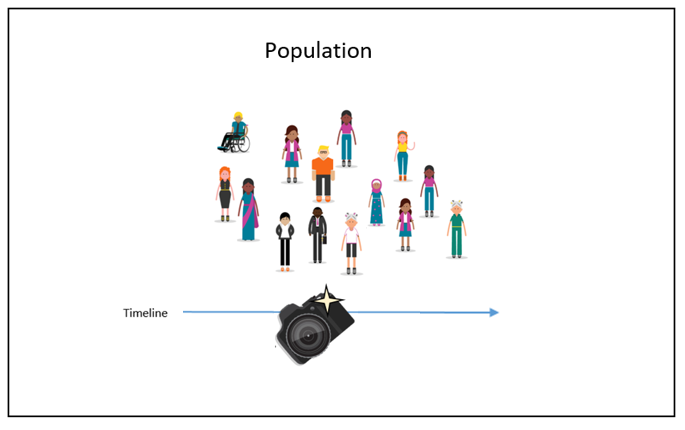Table Of Content

The simulation educational satisfaction score in this study was 62.90 ± 6.93, which was higher than the scores of 57.12 ± 8.21 [8] and 57.26 ± 6.53 [17] in previous studies using the same scale. The higher the satisfaction with the major, the higher the satisfaction with clinical practice [25], and the higher the satisfaction with university life, the higher the simulation educational satisfaction. In a previous study, only 47.5% responded that they were satisfied with their university life [8]. However, in this study, 76.9% were satisfied with their major and clinical practice, indicating that simulation educational satisfaction was higher than in the previous study. Furthermore, in this study, the more satisfied students were with their majors and clinical experiences, the higher their simulation educational satisfaction was, supporting this inference.
Economics: Employment trends analysis
Creating supportive learning environments encouraging collaboration, self-care, and stress management techniques can help alleviate academic stress. Additionally, providing mentorship and counselling services tailored to nursing students’ unique challenges can contribute to their overall well-being and academic success [16,17,18]. In a cross-sectional study, the investigator measures the outcome and the exposures in the study participants at the same time.
Postpartum depression and its correlates: a cross-sectional study in southeast Iran - BMC Women's Health - BioMed Central
Postpartum depression and its correlates: a cross-sectional study in southeast Iran - BMC Women's Health.
Posted: Thu, 22 Sep 2022 07:00:00 GMT [source]
Characteristics of Cross-Sectional Studies
This will ensure that the AMS behavior change interventions for improving prescribing practices are not only robust but also sustainable. We further recommend control of use of watch and reserve antibiotics through policy and adopting up to date clinical and practices. Overuse of antibiotics is a key driver of antimicrobial resistance (AMR) world-wide. We investigated antibiotic use and resistance patterns among patients with suspected first line antibiotic treatment failure at Rumphi District Hospital, Malawi. The primary goal of a cross-sectional study is to examine and analyze the relationships or associations between different variables within a population at a specific point in time.
Cross-sectional vs longitudinal studies
For example, a marketer may uncover how differences in gender, age, educational status, and income, for example, might correlate with participants’ interest in their product. The main strength of the cross-sectional design is the ability to obtain results faster. Participants either have the condition or attribute at the time of data collection or not.

Julia Simkus is a graduate of Princeton University with a Bachelor of Arts in Psychology. She is currently studying for a Master's Degree in Counseling for Mental Health and Wellness in September 2023.
The guideline is a tool investigators can use to develop their manuscripts and offers a checklist of inclusion items for a published paper (Equator.network). The recommended items will help ensure that a reader can understand the manuscript, follow the study’s planning and how the research was conducted, the findings, and the conclusions (von Elm et al., 2014). For investigators studying rare diseases or conditions, the cross-sectional design is not the best fit. Cross-sectional studies often draw samples from a large and heterogeneous study population (Wang & Cheng, 2020).
Characteristics of Cross-Sectional Survey Design
While cross-sectional studies are efficient for gathering data at one point in time and are less costly and time-consuming than longitudinal studies, they fall short in tracking changes over time or establishing cause-and-effect relationships. On the other hand, longitudinal studies excel in observing how variables evolve, providing insights into dynamics and causal pathways. However, longitudinal data collection requires more resources, time, and a rigorous design to manage participant attrition and ensure consistent data collection over the study period. This type of survey can be used to uncover characteristics that exist among participants, but cannot be used to determine cause-and-effect relationships between different variables.
Cross-sectional Area formulas for different shapes and sections
Based on these parameters, the program indicated that a minimum sample size of 976 students was required. As a result, the researchers recruited a convenient sample of 1010 nursing students from different academic levels during the 2022–2023 academic year [19]. This sample size was larger than the minimum required, which could help to increase the accuracy and reliability of the study results.
A study by Sardana et al. evaluated the antibiotic resistance in isolates of Propionibacterium acnes in a tertiary care hospital in India. They recruited 80 patients of acne vulgaris, collected specimen for isolation from open or closed comedones. These specimens were then cultured, the growth identified, and antibiotic susceptibility and resistance were assessed. For example, the survey may uncover that the majority of patients over 70 who checked in with COVID were overweight and immunocompromised.
In this study setting, we observed high use of watch antibiotics along with problem of multi-drug resistant infections in patients experiencing clinical failure in a variety of clinical syndromes. The findings underline the need to revamp diagnostic microbiology to increase the uptake of antimicrobial susceptibility testing to guide specific prescriptions of broad-spectrum antibiotics in the watch list. A cross-sectional study is a type of research that collects data from a group of people at a single point in time to analyze characteristics and relationships.
As we have discussed, a cross-sectional study is merely a snapshot of a certain group of people at a specified point in time. Longitudinal studies, on the other hand, are designed to explore how traits of a group of people change over a certain period of time, or to establish cause-and-effect relationships between input variables and outcomes. Generally aim to provide estimates of the characteristics of a sample, their attitudes, behaviors, or traits.

No comments:
Post a Comment